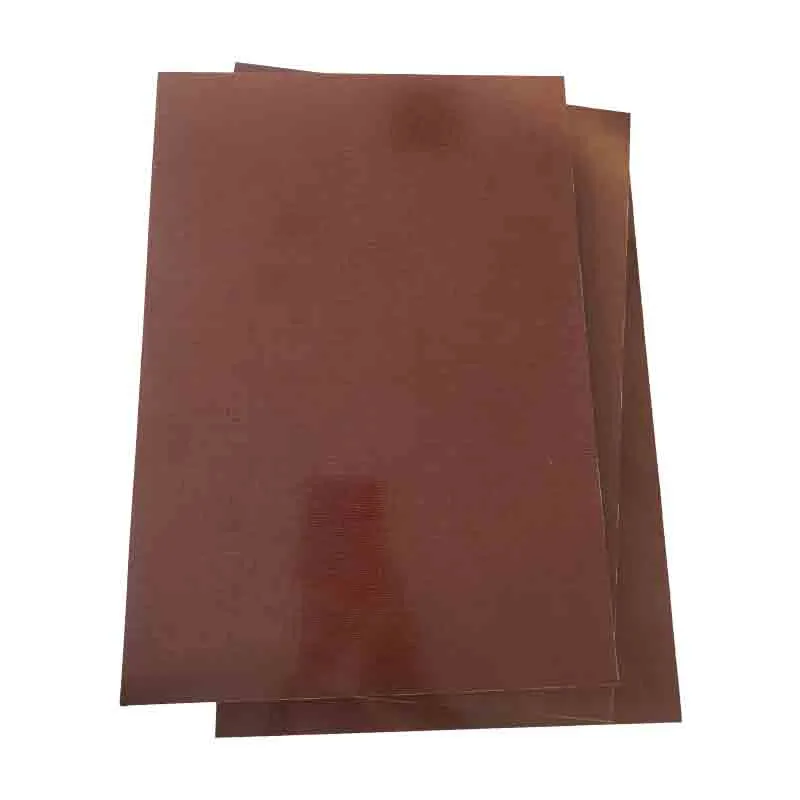The Marvels of CE Phenolic Sheets in Aerospace Engineering
Unparalleled Strength-to-Weight Ratio
CE phenolic sheets boast an exceptional strength-to-weight ratio, making them a prized material in aerospace engineering. This remarkable property allows aircraft designers to create components that are both incredibly strong and lightweight. By utilizing CE phenolic sheets, manufacturers can significantly reduce the overall weight of aircraft without compromising structural integrity. This weight reduction translates directly into improved fuel efficiency, increased payload capacity, and extended flight ranges – all critical factors in the competitive aerospace industry.
Superior Thermal Resistance
The aerospace environment is characterized by extreme temperature fluctuations, from the frigid cold of high altitudes to the intense heat generated during supersonic flight. CE phenolic sheets exhibit outstanding thermal resistance, maintaining their structural properties across a wide temperature range. This thermal stability ensures that aircraft components made from these materials can withstand the rigors of flight without deformation or degradation. The ability to resist heat and fire also enhances safety measures, providing crucial protection in emergency situations.
Exceptional Dimensional Stability
Dimensional stability is paramount in aerospace applications, where precision and consistency are non-negotiable. CE phenolic sheets excel in this aspect, retaining their shape and dimensions even under varying environmental conditions. This stability ensures that aircraft components maintain their exact specifications throughout their service life, minimizing the need for frequent replacements or adjustments. The reliability of CE phenolic sheets contributes to reduced maintenance costs and improved overall aircraft performance.
Applications of CE Phenolic Sheets in Modern Aircraft
Interior Paneling and Furnishings
CE phenolic sheets find extensive use in aircraft interiors, serving as the foundation for paneling, flooring, and various furnishings. Their lightweight nature helps reduce the overall aircraft mass, while their durability ensures longevity in high-traffic areas. The fire-resistant properties of CE phenolic sheets also contribute to passenger safety, meeting stringent aviation regulations. Additionally, these materials can be easily molded and finished to create aesthetically pleasing interiors that enhance the passenger experience.
Structural Components
The impressive strength and stability of CE phenolic sheets make them suitable for use in critical structural components of aircraft. From bulkheads to wing components, these materials provide the necessary rigidity and load-bearing capacity while keeping weight to a minimum. The use of CE phenolic sheets in structural applications allows for innovative designs that optimize aerodynamics and fuel efficiency. As aerospace engineers push the boundaries of aircraft performance, these versatile materials play an increasingly vital role in enabling cutting-edge designs.
Insulation and Thermal Management
Effective insulation and thermal management are crucial in aerospace applications, and CE phenolic sheets excel in this domain. These materials provide excellent thermal insulation, helping to maintain comfortable cabin temperatures and protect sensitive equipment from extreme external conditions. The low thermal conductivity of CE phenolic sheets also aids in managing heat dissipation from engines and other high-temperature areas, contributing to overall system efficiency and longevity.
Innovations and Future Trends in CE Phenolic Sheet Technology
Advanced Composites and Hybrid Materials
The future of CE phenolic sheets in aerospace lies in the development of advanced composites and hybrid materials. Researchers are exploring ways to combine CE phenolic resins with other high-performance materials such as carbon fibers, ceramics, or nanomaterials. These innovative combinations aim to create next-generation composites with even more impressive properties, such as enhanced strength, reduced weight, or improved thermal characteristics. As these advanced materials mature, they promise to unlock new possibilities in aircraft design and performance.
Sustainable Manufacturing Processes
As the aerospace industry increasingly focuses on sustainability, efforts are underway to develop more environmentally friendly manufacturing processes for CE phenolic sheets. This includes exploring bio-based precursors for phenolic resins, optimizing curing processes to reduce energy consumption, and implementing closed-loop recycling systems. These advancements not only reduce the environmental impact of production but also align with the industry's broader goals of creating more sustainable aircraft throughout their lifecycle.
Smart Materials and Integrated Functionality
The integration of smart technologies into CE phenolic sheets represents an exciting frontier in aerospace materials. Researchers are investigating ways to incorporate sensors, conductive elements, or self-healing capabilities directly into the material structure. These smart CE phenolic sheets could enable real-time monitoring of structural health, provide enhanced electromagnetic shielding, or even adapt their properties in response to changing environmental conditions. As these technologies mature, they promise to revolutionize aircraft maintenance, safety, and performance monitoring.
Conclusion
CE phenolic sheets have firmly established themselves as a cornerstone material in the aerospace industry, driving innovation and enabling remarkable advancements in aircraft design and performance. Their unique combination of strength, lightweight properties, thermal resistance, and dimensional stability makes them invaluable across a wide range of applications, from interior furnishings to critical structural components. As the aerospace sector continues to evolve, the ongoing development of CE phenolic sheet technology promises even more exciting possibilities for the future of flight.
Contact Us
To learn more about our high-quality CE phenolic sheets and how they can benefit your aerospace projects, please don't hesitate to reach out. Contact us at info@jhd-material.com for expert advice, product information, and tailored solutions that will help your designs soar to new heights.






